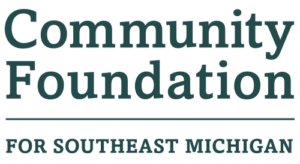An Emergency Medicine Guide to Medication for Opioid Use Disorder
Michigan Opioid Partnership and MHA Keystone Center developed the following training opportunities in 2024 to guide health care providers through the process of implementing medication for opioid use disorder in their emergency departments.
Each training video is worth 1.0 continuing medical education (CME) credit and counts toward the DEA eight-hour training requirement on the treatment and management of patients with opioid or other substance use disorders*.
Peer Recovery Coaches
In this training, we will explore the value of integrating peer recovery coaches into hospital electronic medical records and emergency department staffing structures. Then, we will share current available models for peer recovery coaches within the hospital setting as well as emerging opportunities for funding hospital‐based peer recovery services.
Up to 1.0 CME credits available. Counts toward the DEA training requirement on the treatment and management of patients with opioid or other substance use disorders.
Warm Handoffs and Community Resources
In this training, we will walk through the critical components, data, and literature of warm handoffs and associated outcomes. Then, we will discuss how to identify local community-based resources for handoffs. By the end of the training, you will be able to identify quality improvement opportunities through warm handoffs and referrals.
Up to 1.0 CME credits available. Counts toward the DEA training requirement on the treatment and management of patients with opioid or other substance use disorders.
Treatment Principles
In this training, we will walk through the structure of a treatment pathway for the ED. While specifics may vary, pathways usually involve the same essential steps. By the end of this training, you should be equipped to explain OUD treatment principles, including why long-term medical treatment can lead to significantly higher rates of long-term recovery and harm reduction.
Up to 1.0 CME credits available. Counts toward the DEA training requirement on the treatment and management of patients with opioid or other substance use disorders.
Stigma
In this training, we will focus on identifying the origins of stigma among ED clinicians, staff, and patients. We will explore de-stigmatizing language and behaviors while practicing how to improve interactions with patients and colleagues in the ED.
Up to 1.0 CME credits available. Counts toward the DEA training requirement on the treatment and management of patients with opioid or other substance use disorders.
Precipitated Withdrawal
In this training, we will focus on understanding the pharmacology of precipitated withdrawal. Clinical providers will understand the risks associated with methadone and fentanyl use for precipitated withdrawal. By the end of this training, you will gain comfort in the management of precipitated withdrawal in your patients.
Up to 1.0 CME credits available. Counts toward the DEA training requirement on the treatment and management of patients with opioid or other substance use disorders.
Implementation Protocols
In this training, we focus on the key components of ED MOUD implementation to be incorporated into individual EDs. Strategies from expert emergency medicine physicians, who are familiar with addiction medicine and this process, will be shared. By the end of this training, you will be equipped to construct effective, evidence-based OUD treatment protocols for your ED.
Up to 1.0 CME credits available. Counts toward the DEA training requirement on the treatment and management of patients with opioid or other substance use disorders.
Nursing’s Role in Treating Opioid Use Disorder
Nurses play a key role in supporting patients with OUD and implementing practices that support MOUD as a treatment option. In this training, we will focus on building an understanding of the basics of addiction, how to assess withdrawal, how medication helps treat OUD, and the positive benefits of harm reduction initiatives and recovery resources.
*This session occurred in 2023 and is not and will not be eligible for CME credit.
Emergency Medicine Management of Opioid Use Disorder
In early 2022, Michigan Opioid Partnership and CA Bridge developed the following training opportunities. In late 2022, the X-waiver requirement, which is mentioned throughout the training videos, was eliminated. Up-to-date information on the elimination of the X-waiver requirement is available through SAMHSA and CA Bridge.
The training videos below are eligible for CMEs through July 1, 2025 and count toward the DEA eight-hour training requirement on the treatment and management of patients with opioid or other substance use disorders.
What You Need to Know to Start Treatment Today
By the end of the training, participants will be knowledgeable about prescribing buprenorphine. All ED clinicians will find this module helpful as a review of MOUD pharmacology and the principles of ED-based treatment.
Up to 1.75 CME credits available. Counts toward the DEA training requirement on the treatment and management of patients with opioid or other substance use disorders.
Building Your System for Today & Tomorrow
In this training, we will focus on patient-centered strategies to incorporate MOUD into your ED. Tips and tricks will be shared by clinical experts that have developed programs in their hospitals, throughout Michigan and California.
Up to 1.50 CME credits available. Counts toward the DEA training requirement on the treatment and management of patients with opioid or other substance use disorders.
ED MOUD FAQs
In this training, we will review and address the questions and concerns that we hear most frequently. We will answer basic “how to” questions, address hesitancy, discuss the role of stigma, and more. Throughout the session, we will provide tips and tricks to win over the hearts and minds of your colleagues, leadership, and patients.
Up to 1.25 CME credits available. Counts toward the DEA training requirement on the treatment and management of patients with opioid or other substance use disorders.
Navigating the Landscape Outside the ED
In this training, we will discuss ways to utilize and connect with all available resources outside of the emergency department. We will look at methods for inpatient integration and provide strategies to incorporate warm handoffs into your ED MOUD program. We will review and evaluate community-based options, including harm reduction strategies, support groups, “detox” programs, methadone clinics, and outpatient providers.
Up to 2.0 CME credits available. Counts toward the DEA training requirement on the treatment and management of patients with opioid or other substance use disorders.
Maximizing the Impact and Reach of Medication for Opioid Use Disorder
In this training, we will discuss how MOUD access is a health equity issue and how some populations remain underserved, including Black, pregnant, incarcerated, adolescent, and rural individuals. We will provide strategies for outreach and raising awareness among patients, and we will explain how to best engage and utilize the entire care team, especially nursing.
Up to 2.0 CME credits available. Counts toward the DEA training requirement on the treatment and management of patients with opioid or other substance use disorders.
We also recommend training opportunities available through our valued partners.
California Bridge Training
California Bridge Training
M-OPEN and MEDIC Training
M-OPEN and MEDIC Training
American College of Emergency Physicians
American College of Emergency Physicians
MI CARES
MI CARES
"Everyone is well prepared and organized. These (learning) collaboratives are always educational and helpful. I enjoy hearing challenges at other sites to anticipate barriers we might encounter." Patrick Williams, MPA Beaumont Royal Oak
Sign Up For Email Updates
Receive monthly newsletters from the Michigan Opioid Partnership regarding grant opportunities, technical assistance, training opportunities, tools and more.
If you or someone you know is struggling with opioid use disorder, visit Michigan.gov/opioids.


